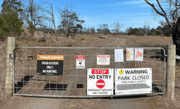Can this proposal help seniors amid the housing crisis? Retirement expert weighs in
By
Danielle F.
- Replies 0
Australia has been grappling with a housing crisis over the past years.
However, amidst the ongoing turmoil, a significant number of seniors are standing their ground against a recently growing trend.
Many seniors are being convinced to downsize their homes.
However, many seniors resist the idea of moving to another property.
The reasons are multifaceted, with emotional attachments to family homes playing a significant role.
Practical concerns were also at the forefront, including the limited availability of suitable smaller properties, the financial strain of moving, and the potential repercussions on Age Pension eligibility.
The Retirement Living Council (RLC) stepped in and advocated for a revision of the pension assets cap and the criteria for Commonwealth Rent Assistance (CRA).
These revisions could alleviate the financial burden on seniors who are considering downsizing their homes.
RLC's Executive Director, Daniel Gannon, highlighted the disconnect between outdated policies and today's property market.
'It's absurd to think that these relics of the past can keep pace with the skyrocketing house prices and the escalating cost of living,' Mr Gannon remarked.
'The current system fails to acknowledge the substantial asset wealth many older Australians have tied up in their homes, inadvertently deterring "asset-rich, cash-poor" seniors from transitioning to more appropriate housing.'
'When government policy effectively traps older people in their homes, we must acknowledge that something is amiss,' Mr Gannon further added.
The dilemma was starkly illustrated by the current pension assets cap, which currently stands at $314,000.
Services Australia Spokesperson Hank Jongen also shed some light on the implications of this cap, especially for those looking to downsize their homes.
'For instance, if you sell your home for $1 million and intend to buy a new one for $700,000, the remaining $300,000 is immediately considered an asset and included in the asset test,' Mr Jongen explained.
This has been a concern, especially after considering the disparity between the rise in median house prices and the increase in the pension assets cap.
Over the past 30 years leading up to 2024, median house prices in capital cities have surged by nearly 600 per cent.
Meanwhile, the pension assets cap only saw a less than 180 per cent increase for a single person.
Moreover, CRA eligibility rules stated that purchasing a home for more than $252,000 could affect seniors' payments.
These policies, according to the RLC, could be a significant barrier to downsizing.
Addressing these concerns should allow 94,000 seniors to access retirement village housing.
It could also release over 59,000 homes for younger families across the country.
The RLC suggested that revising these policies could alleviate pressure on public housing, hospitals, and aged care facilities.
These changes could also simultaneously enhance the quality of life for older Australians through housing better suited to their needs.
As Australians navigate these complex issues, seniors need to weigh the pros and cons of downsizing.
It's a decision that requires careful consideration of one's circumstances and needs.

Have you felt the pressure to downsize over the years? Are you concerned about how it might affect your pension? Your stories and insights are valuable, so please share them with us in the comments section below.
However, amidst the ongoing turmoil, a significant number of seniors are standing their ground against a recently growing trend.
Many seniors are being convinced to downsize their homes.
However, many seniors resist the idea of moving to another property.
The reasons are multifaceted, with emotional attachments to family homes playing a significant role.
Practical concerns were also at the forefront, including the limited availability of suitable smaller properties, the financial strain of moving, and the potential repercussions on Age Pension eligibility.
The Retirement Living Council (RLC) stepped in and advocated for a revision of the pension assets cap and the criteria for Commonwealth Rent Assistance (CRA).
These revisions could alleviate the financial burden on seniors who are considering downsizing their homes.
RLC's Executive Director, Daniel Gannon, highlighted the disconnect between outdated policies and today's property market.
'It's absurd to think that these relics of the past can keep pace with the skyrocketing house prices and the escalating cost of living,' Mr Gannon remarked.
'The current system fails to acknowledge the substantial asset wealth many older Australians have tied up in their homes, inadvertently deterring "asset-rich, cash-poor" seniors from transitioning to more appropriate housing.'
'When government policy effectively traps older people in their homes, we must acknowledge that something is amiss,' Mr Gannon further added.
The dilemma was starkly illustrated by the current pension assets cap, which currently stands at $314,000.
Services Australia Spokesperson Hank Jongen also shed some light on the implications of this cap, especially for those looking to downsize their homes.
'For instance, if you sell your home for $1 million and intend to buy a new one for $700,000, the remaining $300,000 is immediately considered an asset and included in the asset test,' Mr Jongen explained.
This has been a concern, especially after considering the disparity between the rise in median house prices and the increase in the pension assets cap.
Over the past 30 years leading up to 2024, median house prices in capital cities have surged by nearly 600 per cent.
Meanwhile, the pension assets cap only saw a less than 180 per cent increase for a single person.
Moreover, CRA eligibility rules stated that purchasing a home for more than $252,000 could affect seniors' payments.
These policies, according to the RLC, could be a significant barrier to downsizing.
Addressing these concerns should allow 94,000 seniors to access retirement village housing.
It could also release over 59,000 homes for younger families across the country.
The RLC suggested that revising these policies could alleviate pressure on public housing, hospitals, and aged care facilities.
These changes could also simultaneously enhance the quality of life for older Australians through housing better suited to their needs.
As Australians navigate these complex issues, seniors need to weigh the pros and cons of downsizing.
It's a decision that requires careful consideration of one's circumstances and needs.
Key Takeaways
- Older Australians have been pressured to downsize their homes amidst a housing crisis. Yet, they are resistant due to several factors.
- The Retirement Living Council suggested that the Age Pension assets cap and Commonwealth Rent Assistance eligibility need updates to align with current housing prices.
- The pension assets cap at $314,000 has not kept pace with the drastic increase in house prices, which has discouraged downsizing.
- Adjusting these policies could potentially free up housing for younger families and improve the quality of life for seniors through more suitable housing.








